Menu
Physics Lesson 12.5.2 - The Meaning of Dispersion
Please provide a rating, it takes seconds and helps us to keep this resource free for all to use
Welcome to our Physics lesson on The Meaning of Dispersion, this is the second lesson of our suite of physics lessons covering the topic of Dispersion of Light, you can find links to the other lessons within this tutorial and access additional physics learning resources below this lesson.
The Meaning of Dispersion
Light produced by the Sun is normally white. When the white light passes through other transparent media, it refracts. As a result, it changes its original direction. The amount of refraction is determined by the angle of incidence, as explained in the Physics tutorial covering the Refraction of Light.
If the thickness of the refractive medium is constant, the white light will remain white during and after refraction as shown in the figure.
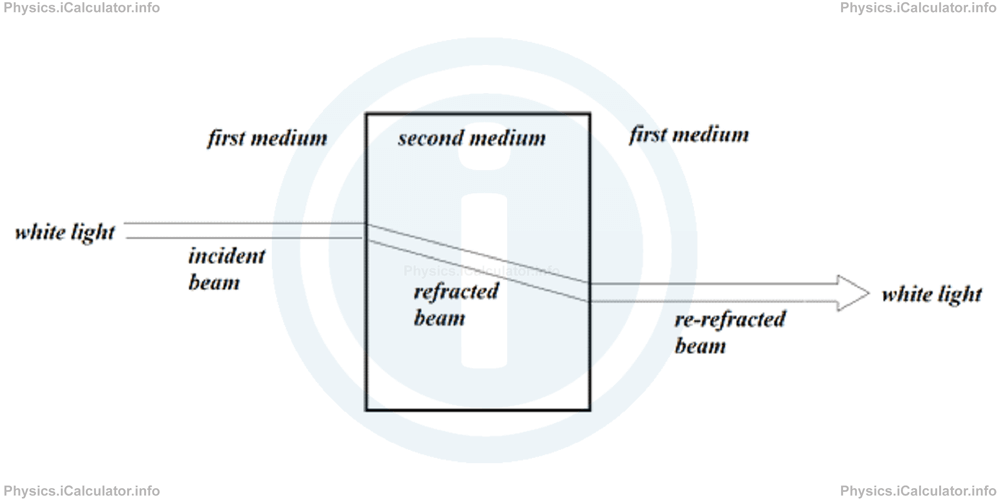
This is because all parts of the white light beam experience the same amount of refraction when passing through the second medium.
On the other hand, when the same white light beam falls on a refractive transparent medium with non-constant thickness, it will split into colours because they are incident at different angles and as a result, not all parts of the original beam travel the same distance through the refractive medium. Hence, the light waves of this beam will experience a deviation in proportion to the path they travel inside the refractive medium as shown in the figure below.
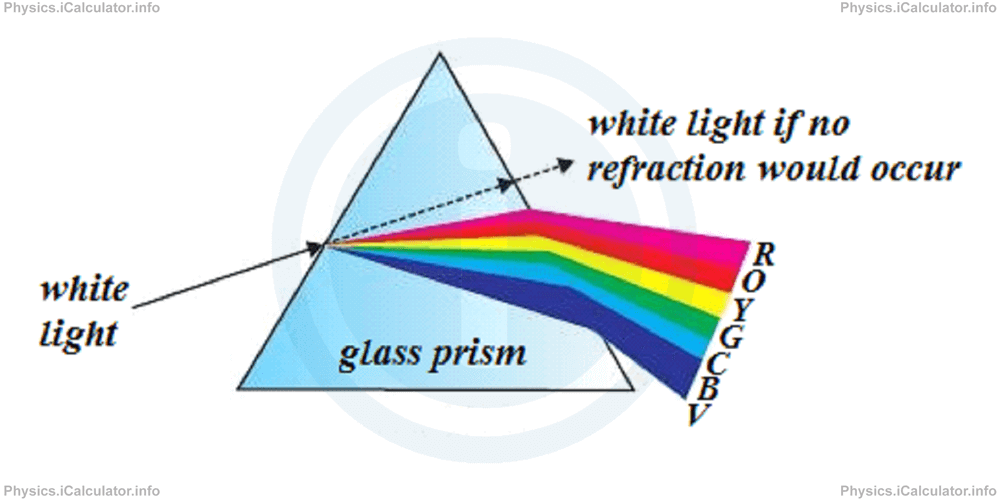
The phenomenon observed in the above figure is known as "dispersion of light". By definition:
The phenomenon of splitting of visible light into its component colours is called dispersion.
Dispersion of light is caused by the change of speed of light ray resulting in a different angle of deviation for each wavelength.
We can observe dispersion in natural form when seeing the rainbow after rain. This phenomenon occurs because immediately after raining, the air still contains a large number of small droplets of water, which act as tiny prisms. Therefore, they cause the dispersion of sunlight into component colours as shown in the figure below.
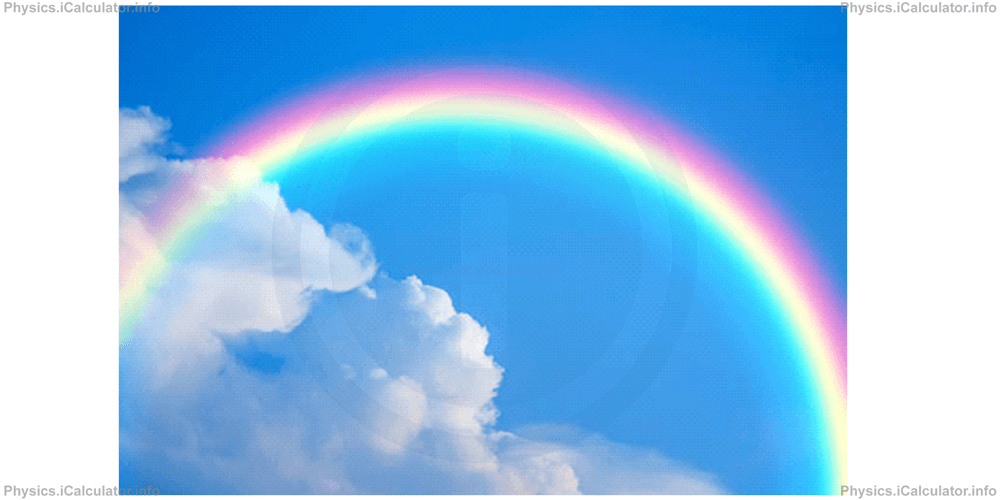
We cannot observe any dispersion when using monochromatic (one colour) light because only white light contains all colours. A monochromatic light ray (for example a light ray produced by a laser) will simply refract when passing through prisms without causing any dispersion.
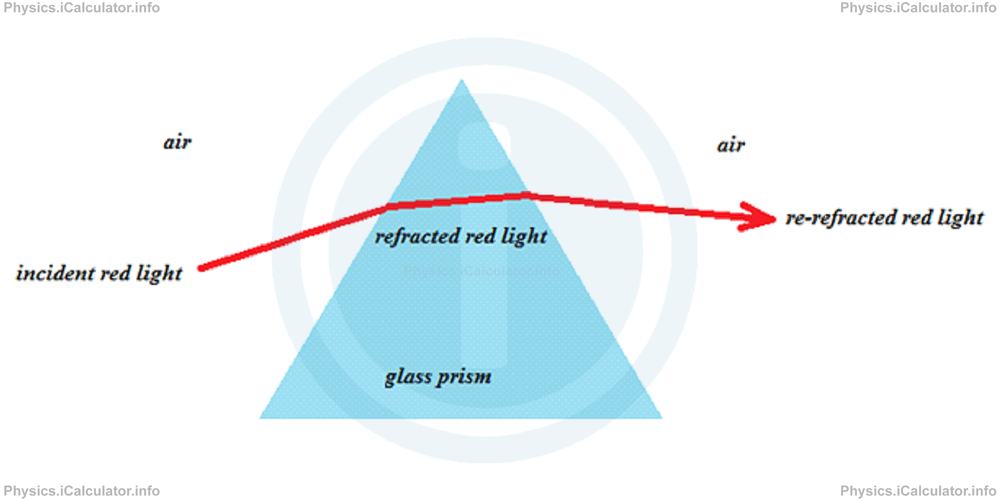
If the dispersed rays enter in another prism placed in the opposite direction as the original prism, a white light ray is produced, i.e. the reverse process of dispersion does occur as shown in the figure below.
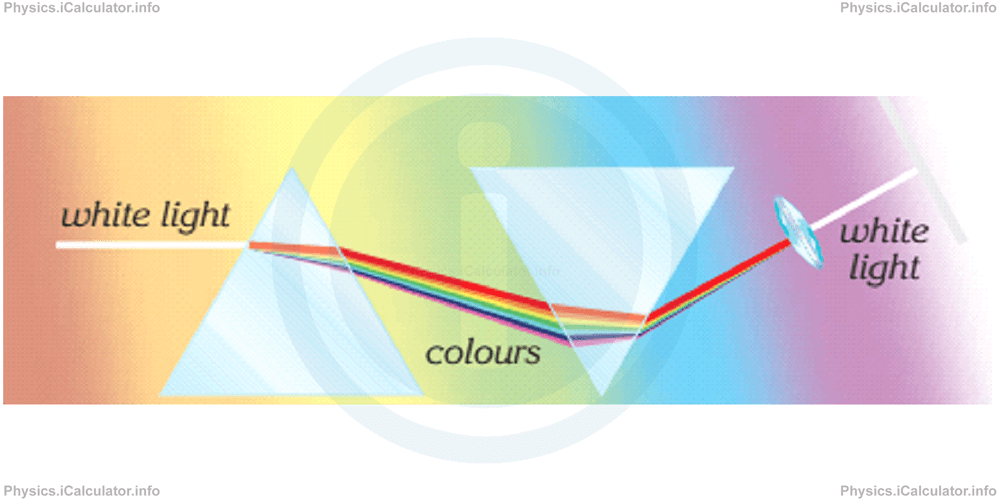
You have reached the end of Physics lesson 12.5.2 The Meaning of Dispersion. There are 4 lessons in this physics tutorial covering Dispersion of Light, you can access all the lessons from this tutorial below.
More Dispersion of Light Lessons and Learning Resources
Whats next?
Enjoy the "The Meaning of Dispersion" physics lesson? People who liked the "Dispersion of Light lesson found the following resources useful:
- Definition Feedback. Helps other - Leave a rating for this definition (see below)
- Optics Physics tutorial: Dispersion of Light. Read the Dispersion of Light physics tutorial and build your physics knowledge of Optics
- Optics Revision Notes: Dispersion of Light. Print the notes so you can revise the key points covered in the physics tutorial for Dispersion of Light
- Optics Practice Questions: Dispersion of Light. Test and improve your knowledge of Dispersion of Light with example questins and answers
- Check your calculations for Optics questions with our excellent Optics calculators which contain full equations and calculations clearly displayed line by line. See the Optics Calculators by iCalculator™ below.
- Continuing learning optics - read our next physics tutorial: Polarization of Light
Help others Learning Physics just like you
Please provide a rating, it takes seconds and helps us to keep this resource free for all to use
We hope you found this Physics lesson "Dispersion of Light" useful. If you did it would be great if you could spare the time to rate this physics lesson (simply click on the number of stars that match your assessment of this physics learning aide) and/or share on social media, this helps us identify popular tutorials and calculators and expand our free learning resources to support our users around the world have free access to expand their knowledge of physics and other disciplines.